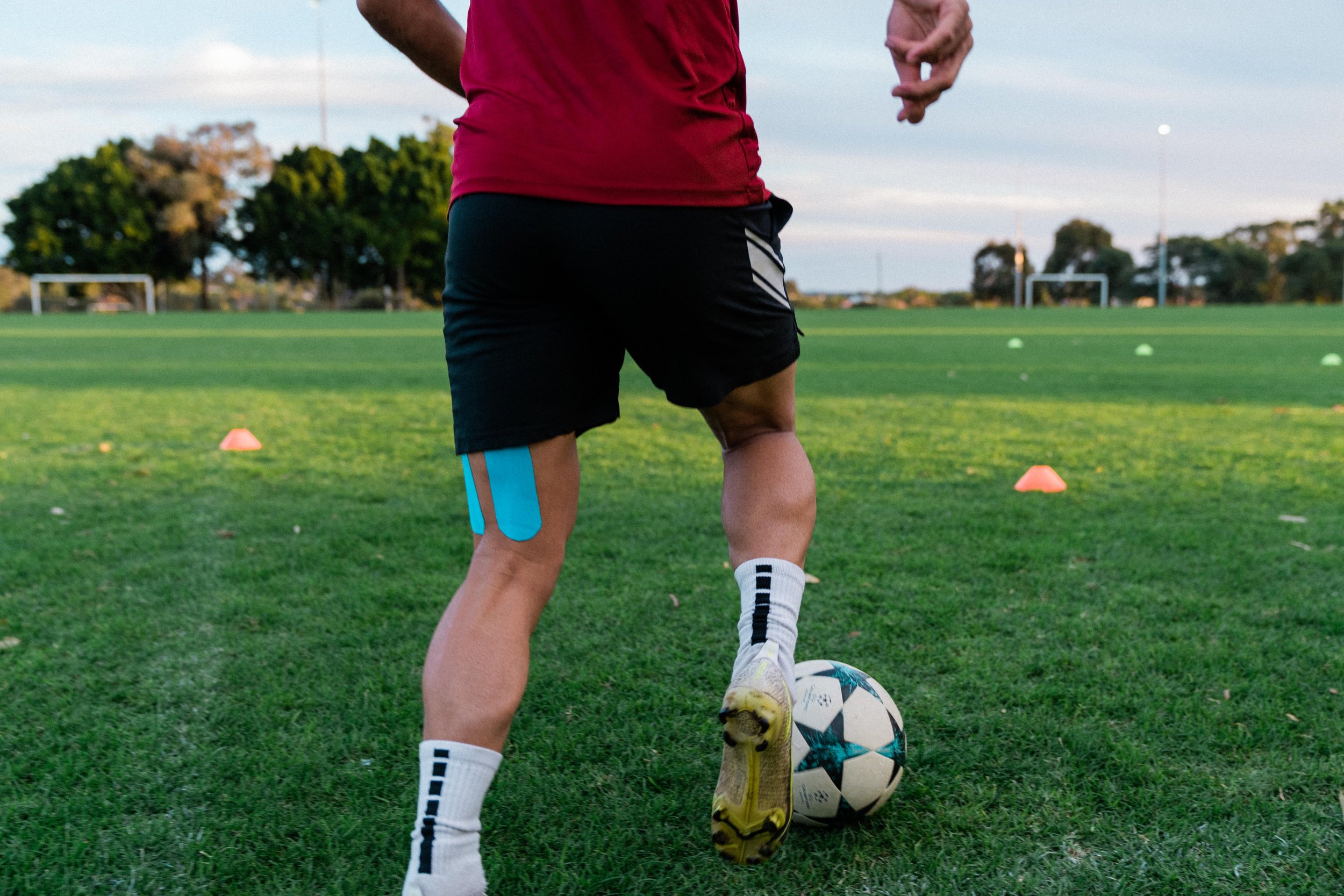5 Common sports injuries, that use sports strapping tape
Sports is an enjoyable activity to get involved in. After all, it helps keeps us physically and mentally active, while providing us with another avenue to stay connected within a community. Like with any activity, sports come with the risk of injuries. That is why it is important to know how to manage and prevent them.
Using methods like sports strapping tape can aid in this process, and is the primary reason companies like ours exist.
Below, we have listed the 5 most common sports injuries that occur in the world of sports, which can also be aided or prevented with sports strapping tape. It is important to follow a guided rehabilitation program after an injury to maximise strength, stability and fitness to prevent the reoccurrence of symptoms. Inadequate rehabilitation can prolong symptoms, reduce sporting participation and high risk of re-injury. If in doubt always consult with your professional healthcare to manage your injury.
#1 Ankle sprains aka “rolled ankle”
These are the most common sporting injuries, 85% of ankle sprains occur from inversion ‘rolling inwards’ of the foot. This is commonly known as a lateral ankle sprain and involves the lateral ankle ligaments: Anterior Talo-fibular Ligament (ATFL) & Calcaneofibular ligament (CFL). Ankle sprains require a diagnosis by a medical health professional to determine the grade of the ankle sprain (I, II, IIIa or IIIb), often this is supported by x-rays to rule in/out other injuries. The grade of the ankle sprain will determine the estimated healing period and return to activity timeline.
#2 Patellofemoral knee pain (PFPS) aka “front knee pain”
Front knee pain can occur as a result of a chronic (long-term) condition that feels worse with squatting, sitting for long periods of time, climbing stairs and running. The knee joint is made up of the tibiofemoral joint (top & bottom leg bone meets) and the patellofemoral joint (knee cap contacts the leg bone). The patella aka ‘knee cap’ sits in the femoral ‘leg bone’ groove, and is covered with cartilage that glides over the cartilage that covers the femoral groove. The joints are surrounded by synovial fluid that minimises resistance, allowing the patella tendons to glide the patella over the femoral groove smoothly. One of the main causes of PFPS is the patella alignment, overuse and overload of the patellofemoral joint, biomechanical abnormalities, muscular weakness or dysfunction. Common treatments can include; manual therapy, strengthening exercises, patella taping, orthotics and education.
#3 1st Metacarpophalangeal (MCP) joint sprain aka “thumb sprain’
Common injuries in football, goalkeeping, netball, basketball, volleyball, skiing, and baseball. Two main ligaments involved are the ulnar collateral ligament (UCL) and radial collateral ligament (RCL). Their role is to stabilise the thumb. This injury occurs often when the thumb is forced to abduct (move to the side) resulting in a strain or tear of the ligament (most common UCL). X-rays can be done, to rule out any fractures, or else the thumb will present as being sore to move or touch. A neurovascular exam is done to ensure motor function, perfusion and sensation in the thumb. Management may include RICER, immobilisation with a thumb splint, analgesia (always seek GP or pharmacist advice) and possibly an orthopaedic specialist follow-up.
#4 Rotator cuff-related shoulder pain (RCRSP) aka “shoulder pain”
The rotator cuff muscles include supraspinatus, infraspinatus, teres minor and subscapularis. These muscles work together and are the main players in every type of shoulder movement and function (flexion, abduction, internal and external rotation). Each muscle's balanced strength and flexibility are important to maintain the function of the shoulder girdle and stabilise the shoulder joint. Common injuries occur due to trauma or overuse injuries due to overhead activities e.g. volleyball, tennis, throwing, overhead mark. Ageing also plays a part in muscle degeneration, impingements and tears. Poor biomechanics of postural dysfunction can also affect the positioning of the glenoid humeral joint in the glenoid cavity (head of the arm bone into the shoulder girdle). The most common signs of RCRSP include pain at or around the shoulder joint, painful range of shoulder movement, muscle weakness or limited function e.g. difficulty lifting overhead to put on a shirt. The shoulder is a complex joint, it gives up stability for a great range of motion, but leaves it vulnerable to injuries. Always consult a health professional for the correct diagnosis and management plan.
#5 Muscle strain aka “pulled/tight muscle”
This occurs when the muscle fibres are overloaded and struggle to cope with the demand placed on the body, resulting in the tearing of the muscle fibres. Most common in sports that require powerful eccentric contraction or over-stretching of the muscles e.g. sprinting or jumping. Muscle strain requires a diagnosis by a medical health professional to determine the Grade of the muscle lesion (I, II, III), this is based on the number of fibres affected according to clinical and imaging investigations. Characteristics of each grade will involve tenderness, strength, function and swelling, which will impact the period of recovery.
Please note, the contents of this article do not constitute professional advice, are not intended to be a substitute for professional advice and should not be relied upon as such. You should seek movement-based advice or other professional advice in relation to any particular matters you or your organisation may have. To find out more, please contact us.
Reference:
1. Weiss L, Weiss J, Pobre T. Oxford American handbook of physical medicine & rehabilitation. Oxford University Press, USA; 2010 Mar 15.
2. Skirven TM, Osterman AL, Fedorczyk J, Amadio PC, Felder S, Shin EK. Rehabilitation of the hand and upper extremity. Elsevier Health Sciences; 2020 Jan 14.
3. Le BT, Wu XL, Lam PH, Murrell GA. Factors predicting rotator cuff retears: an analysis of 1000 consecutive rotator cuff repairs. Am J Sports Med 2014;42:1134-42. http://dx.doi.org/10.1177/0363546514525336
4. Garrett WE. Muscle strain injuries. Am J Sports Med. 1996; 24:S2-88



